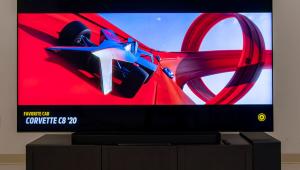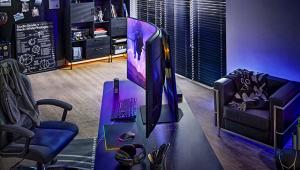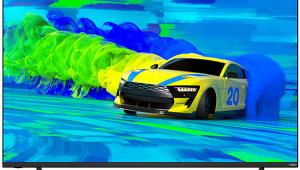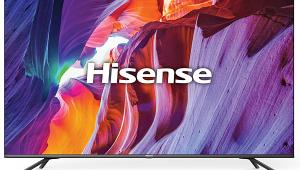LG 65EF9500 OLED Ultra HDTV Review Page 2
When I viewed Sharpness patterns close to the screen, the LG wasn’t as crisply detailed as the best LCD sets. To compensate, I turned the H and V Sharpness controls somewhat above their default settings (10) and left the set’s Edge Enhancement on (its default). With these settings on good sources, it was impossible to fault the LG’s reproduction of detail.
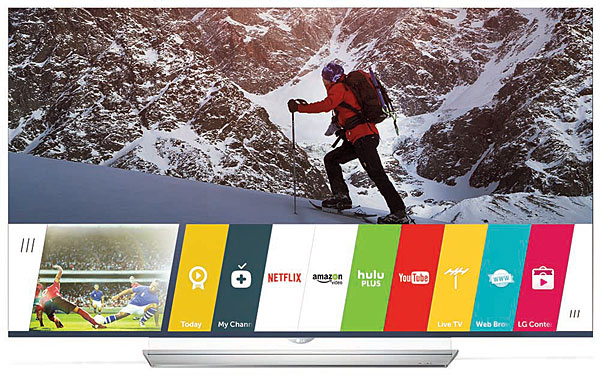
For all of the above demos, the source material was 1080p at best. So it should be obvious that the LG does a very good job in upconverting HD material to 4K (3840 x 2160). But until we get a wide range of 4K Ultra HD material in a format capable of consistent high quality (by which I mean Ultra HD Blu-ray or highbandwidth downloads—not streaming!), we’re stuck with the 4K material we’ve worn thin in our previous Ultra HD reviews.
When I looked at 4K downloads on our Sony 4K server, the LG didn’t disappoint on short subjects plus key clips from Chappie. The only issue with Chappie was that when I compared it with the upconverted Blu-ray, it was hard to spot any significant differences. As I (and others) have said repeatedly, a 65-inch picture at a normal viewing distance (8.5 feet here) just isn’t big enough to clearly show 4K’s increased resolution. Today’s limited Ultra HD material, including that available for the Sony server, doesn’t (yet) include either advanced color or HDR (apart from some questionable streamed titles). Both of these features delivered by UHD Blu-ray will likely produce more eye-popping Ultra HD than plain-vanilla 4K.
I did have two USB flash drives provided by two different manufacturers, each holding very short clips mastered in HDR. One of them was HDR10, the other Dolby Vision. Both of them played, and they looked superb, but only the HDR10 (which the LG is compatible with) looked like it was providing convincing HDR. However, it also locked the Expert1 mode into very high Contrast and OLED Light settings. The result was very bright but also very washed out; I had to turn the accessible Brightness control down to 35 from the default setting of 50 to get the blacks to look as they should on this set. Then it was impressive, but I don’t like the locking out of two basic video controls.
In our evaluations these days, 3D isn’t exactly Job 1, and we no longer calibrate for it. But with the set’s passive 3D glasses, in the 3D default settings of the Expert1 Picture Mode, the LG produced the best 3D I’ve yet seen—anywhere. In fact, I’d guess that if 3D had been this impressive from the beginning, it might well have become the durable success hoped for.
You also get full 1080p resolution for each eye with passive glasses on an Ultra HD display. And since passive glasses block less light than active ones do, the LG produces a bright, punchy 3D picture. Avatar, Tangled, and A Christmas Carol all looked spectacular, and I saw no ghosting from any of them in places where, with active glasses, ghosting often intrudes. If 3D is still near the top of your home theater menu, you won’t be disappointed with this set.
Comparisons
The Vizio RS65-B2 we tested recently, upgraded with the latest firmware intended to further improve black level performance (v1.0.10 as of mid January 2016), was still on hand as we went to press, so I set up a direct comparison between it and the LG. Because of the limited availability of UHD sources, as well as a splitter that could feed them to both sets, the comparison was limited to Blu-ray titles, using the two HDMI outputs on my Oppo BDP-105D player (the Oppo’s Darbee enhancements were off).
Setting up an LCD to match an OLED set as closely as possible so that actual differences between the sets aren’t swamped by variations produced by the control settings isn’t trivial. An OLED operates much like a plasma in that it’s peak output is power supply limited on full-screen bright scenes, not to mention controls that nearly always lack sufficiently fine resolution to match two sets precisely. But with a combination of measurements and fine-tuning, I was able to tweak them to look as near to each other as possible. If I had to err because the given control settings were never spot on, I tried to deviate toward the side of slightly crushed blacks (but never by more than one step on the Brightness control).
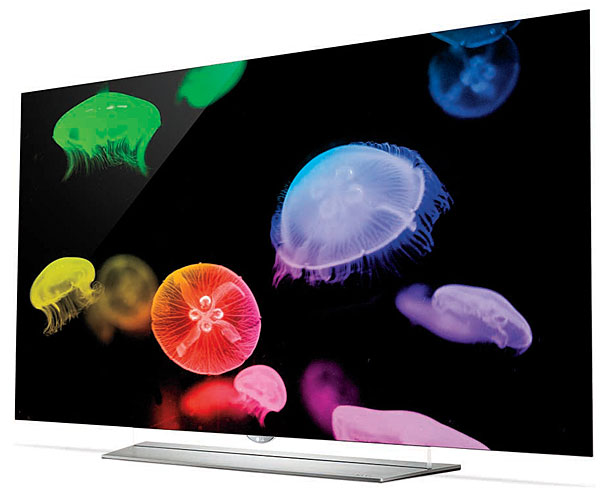
The Vizio, with perhaps the best local dimming LCD-LED implementation currently on the market, is an exceptionally good set, and it generally stayed neck and neck with the LG in all around watchability. The only pronounced differences, and they weren’t trivial, were in the sets’ black levels and shadow detail.
I began with a full-screen black test pattern in a fully darkened room. The screens on both sets went completely black with this pattern, and on full fade-outs between scenes as well. (Before the above-mentioned Vizio firmware upgrade, the Vizio’s screen, while very dim, was still just visible under these conditions.) The black bars also disappeared with widescreen movies on both sets.
But, despite the Vizio’s otherwise excellent black-level performance, I found that on the darkest, most difficult program material the differences between these two sets were rarely subtle. Star fields were good on the Vizio but elicited a “What have I been missing!?” reaction on the LG. Take, for example, the first shot of the interstellar spaceship in Avatar as it approaches Pandora, with the blackness of space and thousands of stars arrayed behind it. The far brighter, more numerous stars on the LG left my jaw on the floor.
In the early New Mexico nighttime desert scenes in Thor, the LG maintained a dark but detailed look with exceptional shadow detail. The same shots on the Vizio, while still good, weren’t as revealing. The same was true on many of my favorite dark scene challenges in both Prometheus and Harry Potter and the Deathly Hallows: Part 2. The Vizio did well on them. But the LG often left me gasping for the right words, which were often simply “Wow!” or just “Oh, s*&%!”
But there are tradeoffs between these two sets that might make a decision between them less than a no-brainer for some buyers. The Vizio did have slightly more intense reds, the LG more intense blues, though more often than not I had no color preference between them. The Vizio RS65-B2 will also go brighter than the LG 65EF9500 where needed, which some viewers might see as an advantage on HDR material.
The LG is compatible with the HDR10 high dynamic range format (which will be mandatory on UHD Blu-rays that offer HDR) while the Vizio does only Dolby Vision (an option on UHD Blu-ray). Some new LG OLEDs due later this year that were announced at CES will do both HDR10 and Dolby Vision. Vizio has stated that the RS65-B2 could conceivably be updated to add HDR10 to its capabilities by a firmware change, including the needed conversion of its current HDMI 2.0 inputs to the HDMI 2.0a connections required by HDR10. But it has not yet announced any plans for that.
Conclusions
OLED is, for me, a game-changer. But only time will tell if it will be a long-term success. When you consider performance alone, it’s clearly superior to any other technology, with exciting prospects for the future—including the possibility someday of paper-thin displays that can fill a wall and make home projectors superfluous.
The LG, as a self-emissive display, should be treated like a plasma set with regard to taking sensible (not paranoid) precautions to avoid burn-in. And because it’s a new technology, we still don’t know if an OLED display will have as long a life expectancy as an LCD set. But for me, anyway, the LG’s blacks and shadow detail trump all of this.






